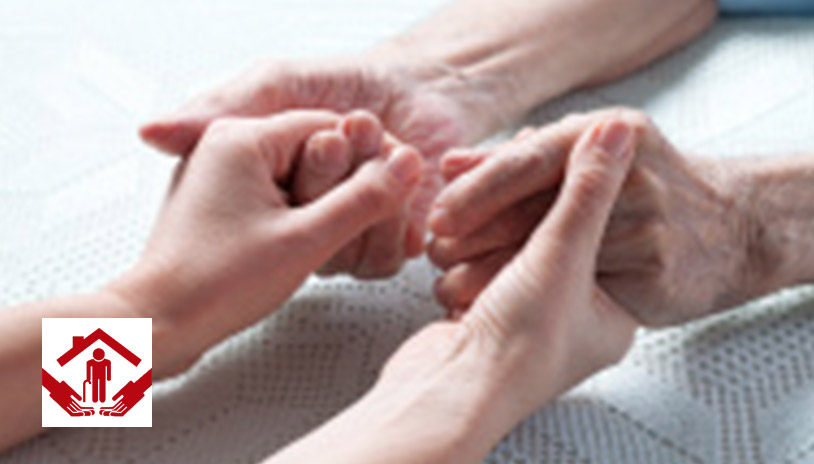
In short
The challenge
Most of the elderly, including the poorest, wish to age at home as long as possible. Several issues are raised by those can still live independently :
- the risk of social isolation increases with age
- their financial resources decrease as they retire
- their homes are less and less adapted to their needs
- new needs arise as they grow old
These issues come with different questions:
- What is the best moment to intervene to prevent old-age dependency ?
- How can we act efficiently and at the same time respect their freedom of choice ?
- What can actually be done to prevent dependency ? What can we offer ?
- How can we help modest senior citizens access this offer, without resorting to a great extent on public subsidies ?
What we offer
Our project consists of a local social animation model, operating at a neighbourhood level, aiming at fighting dependency and social isolation of senior citizens still living independently. Our intervention model involves several stakeholders and is financially viable.
Target : seniors who live independently but who are considered to be fragile, socially isolated, with modest incomes (between 800 and 1000 euros/month).
4 principles :
- An inclusive project operating at a neighbourhood level, organized around a central building and scattered housing units
- A business model relying on multi-stakeholder funding sources
- Providing support to adapt housing to the fragilities of the elderly
- Social animation to create social inclusion and to prevent the loss of autonomy
Our partners


Read more
In 2060, people aged 60 and over will amount to one third of the French population. The share of people over 75 will also double, shifting from 8,5% in 2007 to 16% in 2060[1]. These future senior citizens will probably remain autonomous : currently, only 12% of the people over 75 are considered to be dependent[2], and this proportion should remain stable over time[3]. However, 40% of people over 65 tend to become more fragile[4] and 70% of them start developing chronical illnesses[5]. This increases the risk of dependency. The risk is more important for low-income elderly people, who face social isolation and health issues, and who are often at risk of premature dependency[6].
Most of the elderly, including the poorest, wish to age at home[7] as long as possible. This suppose adaptation of the housing. Several issues are raised by those can still live independently and who are modest:
- The risk of social isolation increases with age : people over 75 tend to see their sociability networks erode over time, be they friendships, peer groups, family or neighbour networks… 30%[8] of these people suffer from social isolation, a situation which increases and even accelerates dependency[9].
- They are all the more isolated and handicaped if their home is located far away from shops, public services, health facilities.
- Senior citizens also see their financial resources decrease as they retire. Decreases in their incomes of 25% and up to 50%[10] can occur, which compels some of them to leave their homes as they cannot afford to live there anymore.
- These very homes are less and less adapted to their needs. They turn out to be oversized as their children leave, or inadequate regarding the new fragilities arising with age. Even if the adaptation of their homes can be largely subsidized, the administrative procedures are complex and the products can be stigmatizing.
- Finally, new needs arise as they grow old. The elderly are not always aware of their increasing fragilities and sometimes tend to deny them. The loss of autonomy can be quick and appears shortly after disruptive events such as a hospitalization, a fall, the spouse’s death… To prevent this situation, supportive care-services must be procided at home. But they are costly and hardly accepted by the elderly.
These issues come with different questions:
- What is the best moment to intervene to prevent old-age dependency ? How can we act efficiently and at the same time respect their freedom of choice ? The early identification of signs of fragility allows for prevention of important expenditures induced by the loss of autonomy, both for individuals and society as a whole.
- What can actually be done to prevent dependency ? What can we offer ? The effects of old age trigger very different needs, calling for different kinds of solutions : home improvement, new equipment, daily living support, human relations… Each particular need must be articulated to an adequate response to the overall need, coupled with a viable business model.
- How can we help modest senior citizens access this offer, without resorting to a great extent on public subsidies ?
Following on from our previous initiatives[11], we believe social housing[12] is an affordable answer for the elderly.
[1] INSEE, 2060 demographic projections (Insee Première, October 2010). [2] Following the AGGIR’s definition of dependency. AGGIR defines autonomy (ie. the absence of dependency) as a one’s capacity to undertake its daily activities on his/her own. AGGIR defined six degrees of autonomy ranging from 6 (full autonomy) to 1 (full dependency). This typology serves as a basis for delivering autonomy-related social benefits. [3] According to the CREDOC (2008), the growth of the older population results from gains in healthy life expectancy, with a decline in severe forms of dependency. [4] According to L.Fried, a person is considered to be fragile if he or she features at least three of the five folllowing characteristics : unintentional loss of weight, slowing of walking pace, expressed exhaustion, decline of muscular strength, excessive sedentariness. [5] INSEE, National Health Survey (2002-2003). [6] Fondation de France, « Forms of loneliness in France » (2014) ; IGAS, « Health social inequalities » (2011) ; INSEE « Social fragilities of present and future senior citizens at a glance» (2014). [7] 80% of the elderly losing their autonomy wish to age at home as long as possible (DREES, « Dependency and Handicap : French opinions between 2000 and 2005 », Etudes et Resultats n°491, 2006. [8]«Fondation de France, « Forms of loneliness in France » (2014). [9] Nathalie Lancelle, a French sociologist specialized in gerontology, criticizes the stigmatization of the elderly in our societies (2010). [10] 2013 HSBC study on the future of pensions. [11] Study on the global cost of social housing (2012) and rcomplementary study (2014). [12] People aged over 65 amount to 1,1M social housing tenants and 7% of new entrants.
We have tried to work out what would be the best housing solution for low-income senior citizens, who are still autonomous but more and more fragile. Our aim is to prevent the loss of autonomy at an affordable price both for them and the community.
A working group was created to reflect on this issue, involving ergotherapists, social landlords, construction firms, adapted housing managers, sociologists, service and care providers). This group aimed to expose the challenges of each expertise in order to propose an appropriate offer to the targeted people, combining housing and services to prevent dependency.
We came up with a social animation intervention model, operating at a neighbourhood level, aiming at fighting dependency and social isolation, and involving a large range of stakeholders, using a viable business model.
Our target : senior citizens who are fragile but still living independently, with modest incomes ranging from 800€ to 1000€ per month
4 principles :
- An inclusive project operating at a neighbourhood level, organized around a central building and scattered housing units
- A business model relying on multi-stakeholder funding sources
- Providing support to adapt housing to the fragilities of the elderly
- Social animation to create social inclusion and to prevent the loss of autonomy
We want to test this model with social landlords or local authorities willing to provide adequate solutions to their ageing residents/citizens.
Our objectives are the following :
- Providing services to a large number of senior citizens living in a given neighbourhood, at home, using a central building
- Bringing a dynamic to the district by raising awareness about the challenges of ageing
- Decentralizing the social animation to a professional animator
- Building-up on the existing local stakeholders
- Coordinating the stakeholders using housing
- Organizing seniors observation by neighbours or surrounding inhabitants





